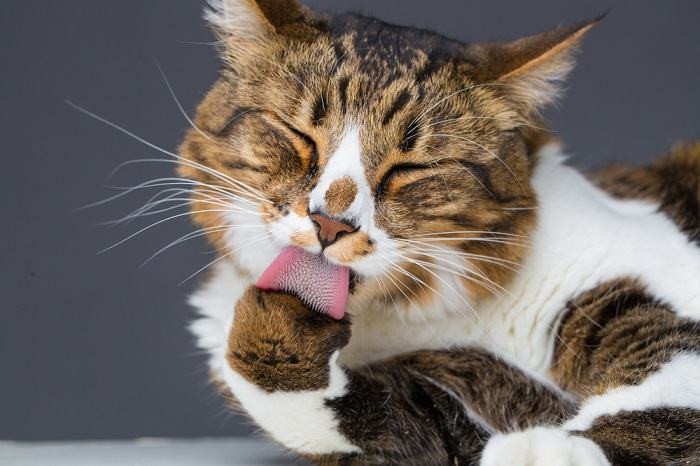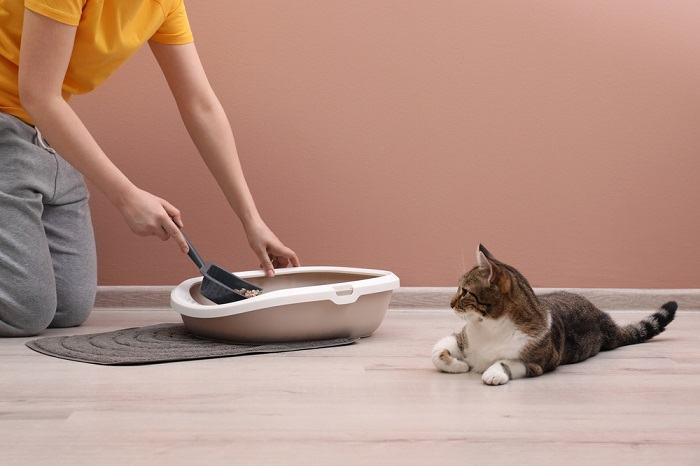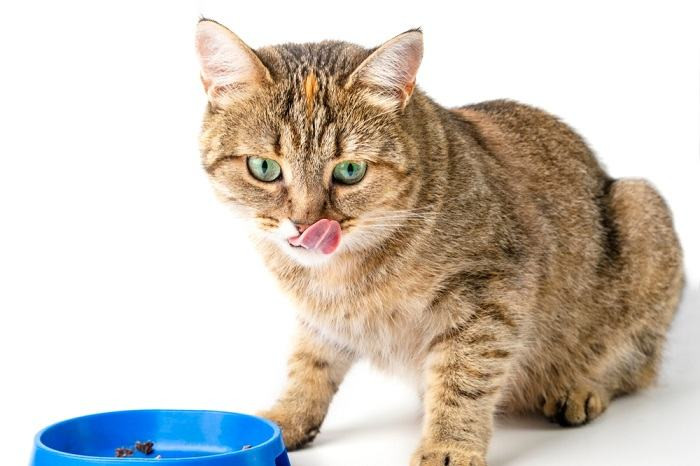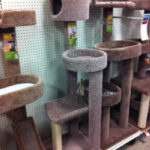Laxatone is a well-known brand of hairball control supplement produced by Vetoquinol. This article will explore what Laxatone is, its benefits for cats, possible side effects, and address common questions cat owners have.
Laxatone (White Petrolatum) for Cats: A Quick Guide
Medication Type: Oral lubricant/laxative
Form: Oral gel
Prescription Required: No
FDA Approved: No
Life Stage: All life stages
Brand Names: Laxatone, Lax’aire
Common Names: Petrolatum
Available Dosages: Laxatone: 1285mg petrolatum per teaspoon
Expiration Range: Store in a cool, dry place. Use before the expiration date on the packaging.
Understanding Laxatone and its Ingredients
Laxatone is a brand name for a feline supplement formulated with white petrolatum, light mineral oil, and soybean oil. Primarily, it functions as a mild laxative, specifically designed to aid cats in passing hair through their digestive system, reducing hairball formation and related discomfort.
The key ingredient, white petrolatum, is essentially petroleum jelly, akin to the familiar brand Vaseline. Petrolatum’s lubricating and moisturizing properties are well-established, making it useful for various applications.
Mineral oil, closely related to petrolatum, also acts as a lubricant. In veterinary medicine, it’s frequently administered orally to facilitate the movement of digestive contents.
How Laxatone Benefits Cats: Hairball Control and Beyond
 Cat meticulously grooming its fur, highlighting feline self-care.Cats are naturally meticulous groomers, and in this process, they inevitably ingest hair. While some hair passes through their system without issue, sometimes it can lead to problems.
Cat meticulously grooming its fur, highlighting feline self-care.Cats are naturally meticulous groomers, and in this process, they inevitably ingest hair. While some hair passes through their system without issue, sometimes it can lead to problems.
A cat’s grooming routine is essential for maintaining healthy skin and coat. Their specialized barbed tongues effectively remove loose fur and stimulate skin cell turnover. Reduced grooming can indicate underlying health issues and result in dandruff and matted fur.
However, this efficient self-grooming often leads to hair ingestion. Normally, swallowed hair travels through the digestive tract and is eliminated in feces.
Hairball Formation: When Hair Accumulates
Sometimes, ingested hair accumulates in the stomach, forming a hairball. Eventually, the cat will vomit the hairball to expel it. Despite the common phrase “coughing up a hairball,” it’s actually a vomiting process.
It’s crucial to differentiate between hairballs and potential respiratory issues. If your cat appears to be trying to expel a hairball but produces nothing, it could be a sign of inflammatory airway disease or feline asthma, conditions sometimes mistaken for hairball issues. Consulting a veterinarian is essential for accurate diagnosis.
Constipation and Hairballs
Ingested hair can also contribute to constipation in cats. Hair is indigestible, and clumps of hair in the intestines can slow down the digestive process.
Cats in multi-cat households, where mutual grooming is common, and long-haired breeds are more prone to hairball-related issues and constipation.
Laxatone’s Role in Hairball and Constipation Relief
Laxatone, when given orally, lubricates the ingested hair, allowing it to move more easily from the stomach, through the intestines, and into the colon for elimination.
Beyond hairball management, veterinarians may recommend Laxatone for mild or occasional constipation not solely caused by hair accumulation. However, for persistent or severe constipation, Laxatone alone is usually insufficient, and other veterinary treatments are necessary.
Regular Laxatone use can be beneficial for cats prone to hairballs, long-haired breeds, and cats in multi-cat homes, helping to lubricate the digestive system and prevent hairball formation proactively.
Potential Side Effects of Laxatone in Cats
 Woman scooping cat litter in a clean litter box, emphasizing pet care and hygiene.When administered as directed in appropriate amounts, Laxatone typically has minimal side effects in cats. Overuse or excessive doses of some laxatives might lead to soft stools or diarrhea. If this occurs, reducing the dosage or frequency of administration should resolve the issue.
Woman scooping cat litter in a clean litter box, emphasizing pet care and hygiene.When administered as directed in appropriate amounts, Laxatone typically has minimal side effects in cats. Overuse or excessive doses of some laxatives might lead to soft stools or diarrhea. If this occurs, reducing the dosage or frequency of administration should resolve the issue.
Managing Expectations with Laxatone
It’s important to have realistic expectations. Laxatone is designed to alleviate mild hairball and constipation symptoms. It might not completely eliminate hairballs in all cases.
When to Seek Veterinary Care
If your cat experiences difficulty defecating, loss of appetite, vomiting, small amounts of liquid stool, or lethargy, these signs are unlikely to be solely due to Laxatone administration. These symptoms indicate a more serious constipation problem that requires veterinary attention and cannot be managed with Laxatone alone. A prompt veterinary examination is crucial in such cases.
Proper Laxatone Dosage and Administration for Cats
 Close-up of administering cat medication, stressing accurate dosage for feline health.According to the manufacturer’s guidelines, for initial hairball control, administer approximately ½ to 1 teaspoon of Laxatone once daily for two to three days. For maintenance, reduce the dosage to ¼ to ½ teaspoon two to three times per week.
Close-up of administering cat medication, stressing accurate dosage for feline health.According to the manufacturer’s guidelines, for initial hairball control, administer approximately ½ to 1 teaspoon of Laxatone once daily for two to three days. For maintenance, reduce the dosage to ¼ to ½ teaspoon two to three times per week.
For mild constipation, Laxatone can be given once or twice daily initially. If there’s no bowel movement within one to two days, or if your cat develops reduced appetite, low energy, or vomiting, consult your veterinarian promptly.
Administering Laxatone Gel
Laxatone gel is palatable and tuna-flavored, making administration easier. You can offer it directly from the tube, on your finger, or mixed with your cat’s food.
If direct administration is challenging, try applying a small amount of gel to your cat’s front paw. Cats instinctively groom themselves, and most will lick the gel off their paw, consuming the Laxatone in the process.
Avoid forcing the gel directly into your cat’s mouth, as the tube isn’t designed for this, and it might create negative associations with the treatment.
Conclusion: Laxatone as a Tool for Hairball and Mild Constipation Management
Laxatone and similar products have long been a popular at-home remedy for feline hairballs and mild constipation. While Laxatone effectively aids in hair passage and can help with mild constipation, it’s not a standalone solution for chronic or severe constipation.
Drug Dosing Disclaimer: Dosage information is provided for FDA-approved medications for cats and follows label guidelines. Off-label medication use requires veterinarian-determined safe and appropriate dosing. Consult your veterinarian to determine if a medication is suitable for your cat. Self-adjusting medication doses without veterinary guidance can be risky. Human medications should not be given to pets without prior veterinary consultation.
Frequently Asked Questions About Laxatone for Cats
How Quickly Does Laxatone Work in Cats?
For mild constipation, especially related to hairballs, improvement in stool consistency and bowel movements should occur within 24-48 hours. If constipation persists or worsens, or if your cat develops concerning symptoms like appetite loss, lethargy, or vomiting, seek veterinary advice promptly.
For routine hairball management, you should observe a reduction in hairball frequency within a week of regular Laxatone use.
How Often Should I Give My Cat Laxatone?
For hairball prevention, daily initial administration might be needed, followed by a maintenance dose of 2-3 times per week.
While Laxatone can be given up to twice daily for constipation, more frequent administration is unlikely to be more beneficial. If your cat remains constipated despite twice-daily Laxatone, veterinary evaluation is recommended.
Can Laxatone Help My Cat Poop?
Yes, Laxatone can be effective for mild constipation, particularly when caused by hair accumulation. However, constipation has various underlying causes. If your cat experiences recurrent constipation, identifying the root cause is crucial.
Laxatone is suitable for mild cases but is not intended for chronic, recurrent constipation, constipation related to underlying diseases, fecal impaction (obstipation), or megacolon (often secondary to chronic constipation).
What’s the Best Way to Give Laxatone to My Cat?
Laxatone and similar generic products are typically fish-flavored. If your cat doesn’t readily take it as a treat from the tube or your finger, try applying it to their nose or front paw.
Cats are meticulous groomers and will usually lick and clean off anything foreign on their fur, making this a simple trick to encourage them to consume the gel willingly.


